Complete Solutions to Exercise 8.2 of chapter WORK, POWER & ENERGY of Class 11 book with complete answers and questions
| Class 11 | PHYSICS |
| Chapter | WORK, POWER & ENERGY |
| CENGAGE PHYSICS | Exercise 8.2 |
| Number Of Questions | 25 |
| Academic Year | 2023-24 |
The kinetic energy of a body is increased by `21%`. What is the percentage increase in the magnitude of linear momentum of the body?
View SolutionA particle of mass `0.5kg` travels in a straight line with velocity `v=ax^(3//2)` where `a=5m^(-1//2)s^-1`. What is the work done by the net force during its displacement from `x=0` to `x=2m`?
View SolutionCan kinetic energy be negative? Explain.
View SolutionThe kinetic energy of an object depends on the frame of reference in which its motion is measured. Give an example to illustrate this point.
View SolutionYou are reshelving books in a library. You lift a book from the floor to the top shelf. The kinetic energy of the book on the floor was zero and the kinetic energy of the book on the top shelf is zero, so no change occurs in the kinetic energy even though you did some work in lifting the books. Is the work-kinetic energy theorem violated?
View SolutionWhat is the reason that we burn out our body fat only when we walk briskly? Why does normal walking not burn out the same amount of body fat when the distance covered remains the same?
View SolutionFigure shows three paths connecting points a and b, A single force F does the indicated work on a particle moving along each path in the indicated direction. On the basis of this information, is force F conservative?

View SolutionThe potential energy of a conservative force field is given by
`U=ax^(2)-bx`
where, a and b are positive constants. Find the equilibrium position and discuss whether the equilibrium is stable, unstable or neutral.
View SolutionA particle moves in x-y plane in figure under the influence of a friction force with magnitude `3.00N` and acting in the direction opposite to the particle's displacement. Calculate the work done by the friction force on particle as it moves along the following closed paths: (a) path OA followed by AC and return path AO, (b) path OA followed by AC and the return path CO, (c) path OC followed by the return path CO, and (d) each of your three answers should be non-zero. What is the significant of this observation?
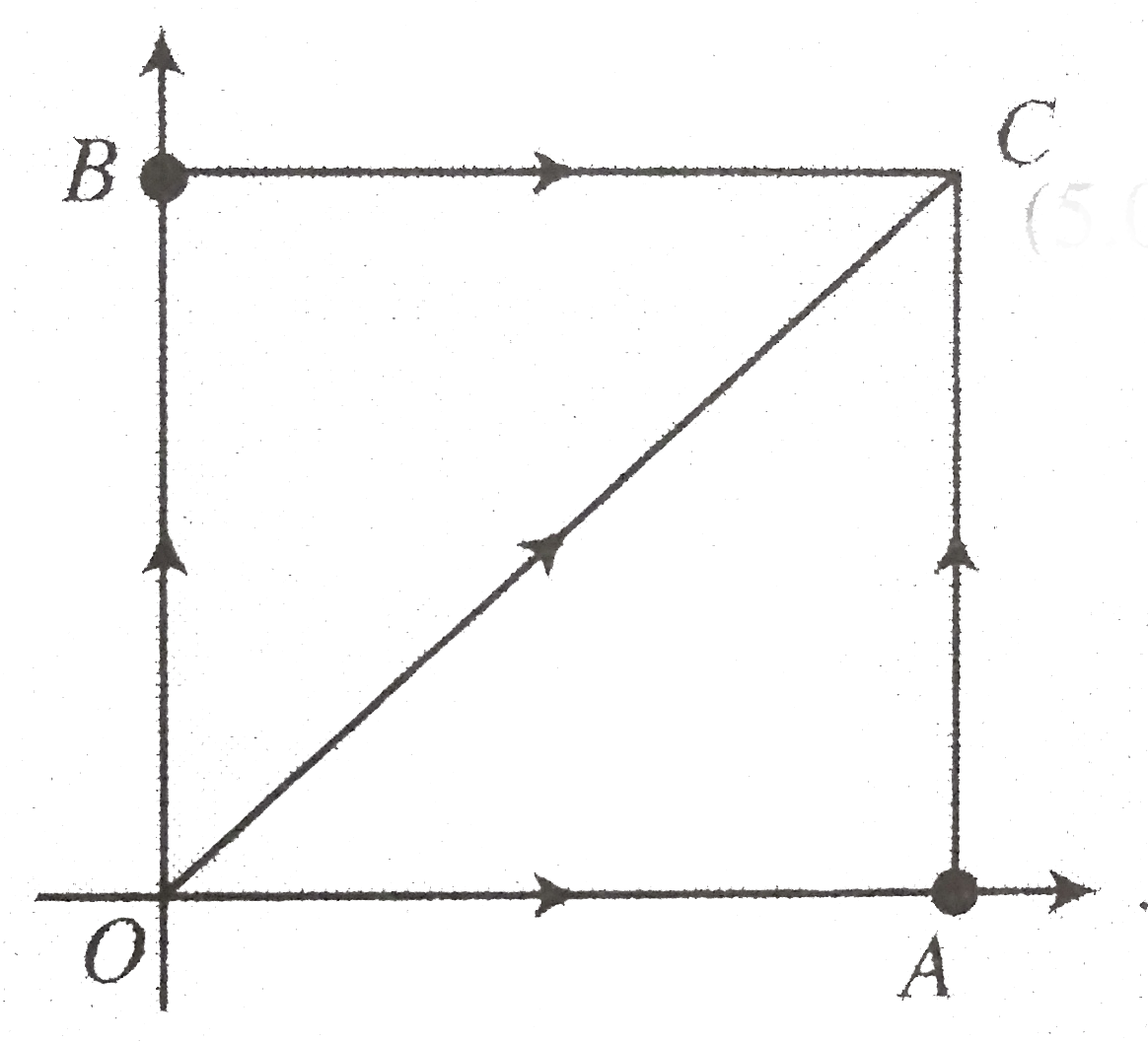
View SolutionA single conservative force acting on a particle varies as `vecF=(-Ax+Bx^2)hatiN`, where A and B are constants and x is in meters. (a) Calculate the potential energy function `U(x)` associated with this force, taking `U=0` at `x=0`. (b) Find the change in potential energy and the change in kinetic energy of the system as the particles moves from `x=2.00m` to `x=3.00m`.
View SolutionA potential energy function for a two-dimensional force is the form `U=3x^2y-7x`. Find the force that acts at the point `(x,y)`.
View SolutionFor the potential energy curve shown in figure.
(a) Determine whether the force `F_x` is positive, negative, or zero at the five points indicated, (b) Indicate points of stable, unstable, and neutral equilibrium, (c) Sketch the curve for `F_x` versus x from `x=0` to `x=8m`.
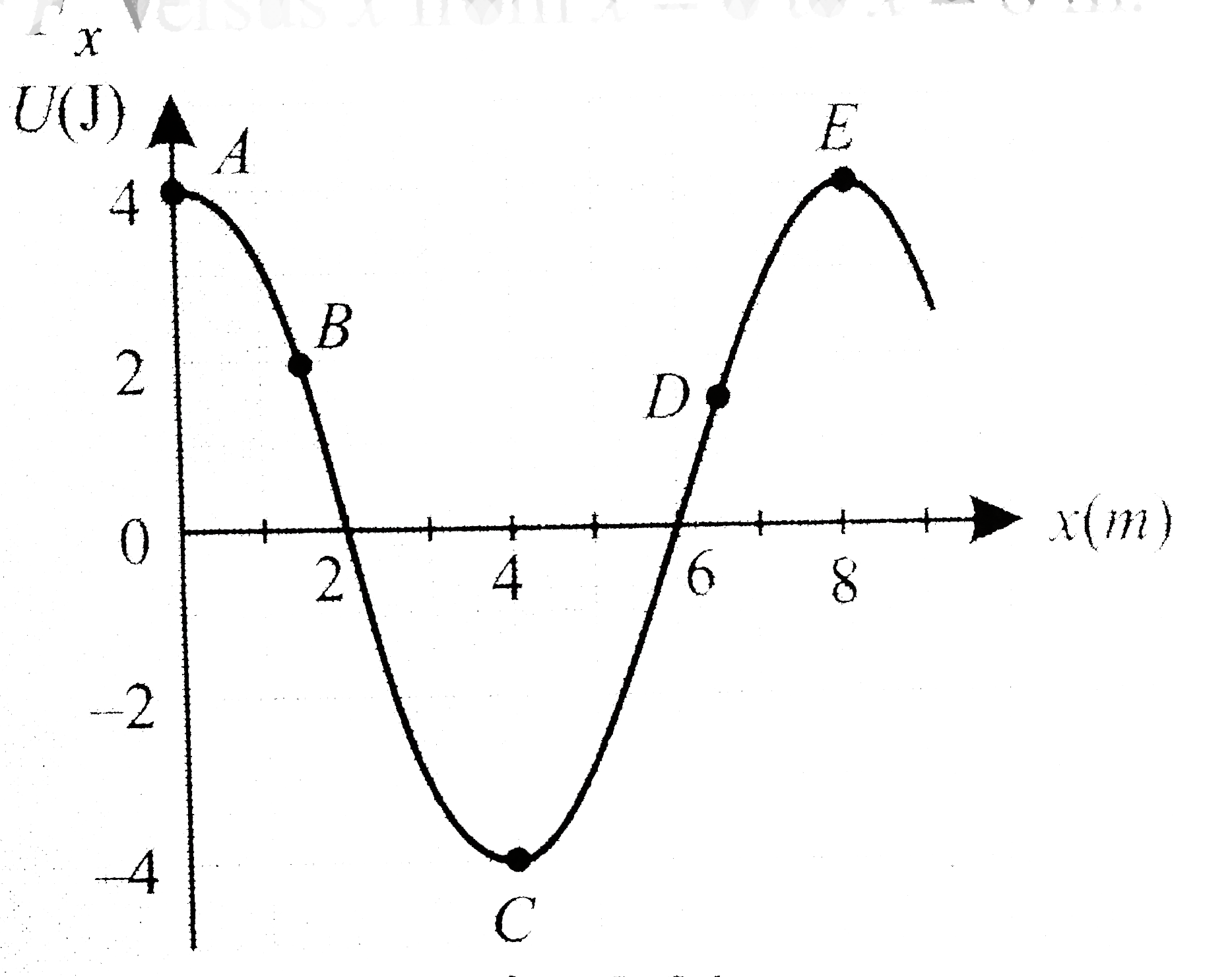
View SolutionIs it possible exert a force which does work on a body without changing its kinetic energy? If so, give example.
View SolutionThe kinetic friction force acting on a sliding body moving in a straight line is constant, but it is non-conservative. Explain.
View SolutionA single conservative force acting on a particle varies as `vecF=(-Ax+Bx^2)hatiN`, where A and B are constants and x is in meters. (a) Calculate the potential energy function `U(x)` associated with this force, taking `U=0` at `x=0`. (b) Find the change in potential energy and the change in kinetic energy of the system as the particles moves from `x=2.00m` to `x=3.00m`.
View SolutionA block of mass `m` is placed at the bottom of a massless smooth wedge which if placed on a horizontal surface. When we push the wedge with a constant force, the block moves up the wedge. Find the work done by the external agent when the block has a speed v and is reaches the top of the wedge.

View SolutionA particle is projected in gravity with a speed `v_0`. Using W-E theorem, find the speed of the particle as the function of vertical distance y.
View SolutionA block is released from rest from a height `h=5m`. After travelling through the smooth curved surface it moves on the rough horizontal surface through a length `1=8m` and climbs onto the other smooth curved surface through a height `h^'`. If `mu=0.5`, find `h^'`.
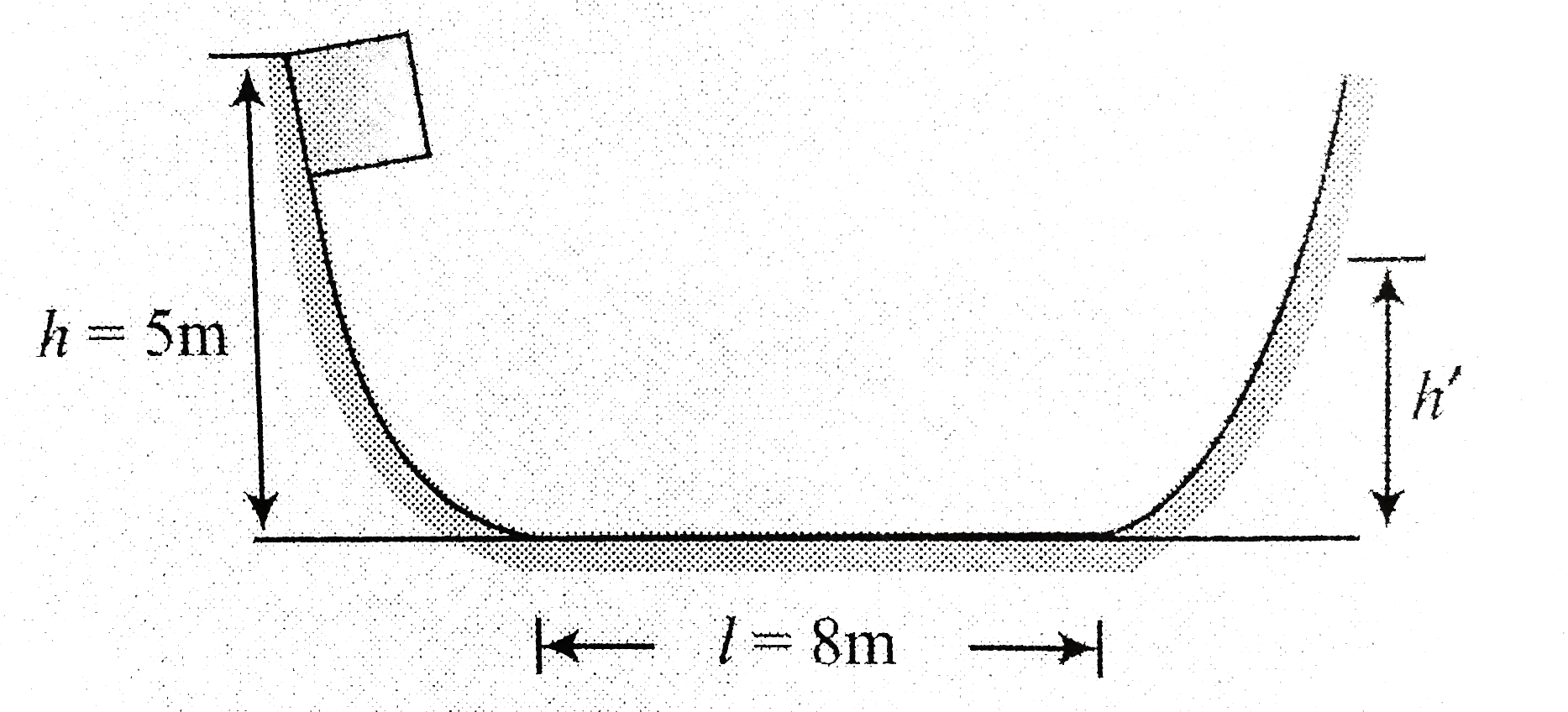
View SolutionA block of mass `m` is connected with a rigid wall by light spring of stiffness `k`. Initially the spring is relaxed.

If the block is pushed with a velocity `v_0`, it oscillates back and forth and stops. Assuming `mu` as the coefficient of kinetic friction between block and ground, find the work done by friction till the block stops.
View SolutionTwo blocks of masses `m_1` and `m_2` inter connected by a spring of stiffness `k` are placed on a horizontal surface. If a constant horizontal force F acts on the block `m_1` it slides through a distance x whereas `m_2` remains stationary. If the coefficient of friction between all contacting surfaces is `mu`, find the speed of the block `m_1` as the function `x`.

View SolutionA ball of mass m is thrown in air with speed `v_(1)` from a height `h_(1)` and it is at a height `h_(2)(gth_(1))` when its speed becomes `v_(2)` . Find the work done on the ball the air resistance.
View SolutionA spring block system is placed on a rough horizontal surface having coefficient of friciton `mu`. The spring is given initial elongation `3mumg//k` (where m=mass of block and k=spring constant) and the block is released from rest. For the subsequent motion, find
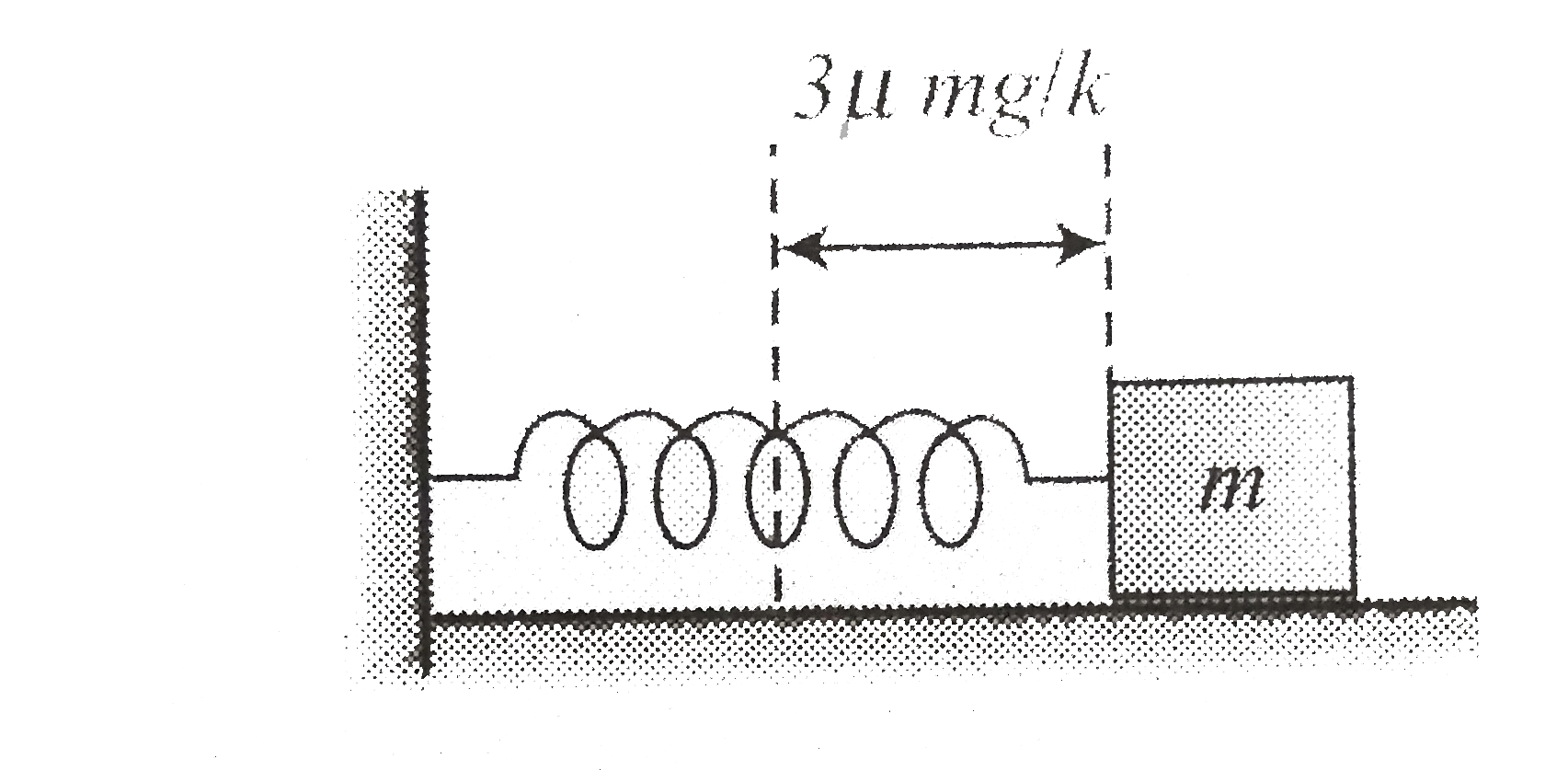
a. Initial acceleration of block
b. Maximum compression in spring
c. Maximum speed of the block
View SolutionFind the maximum energy stored in the spring shown in figure, for which the block remains stationary on the rough horizontal surface.
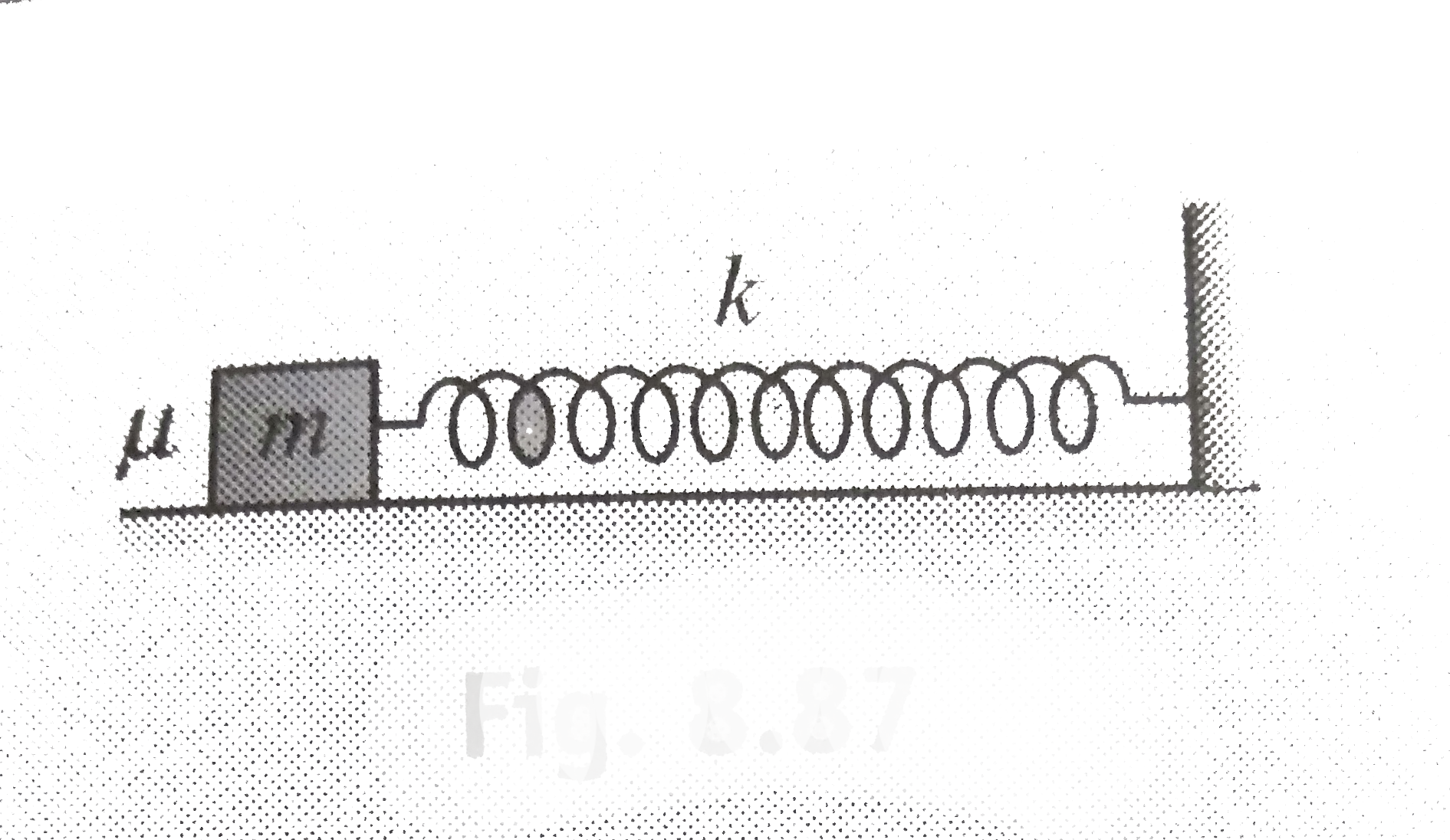
View SolutionA block of mass `m` held touching the upper end of a light spring of force constant K as shown in figure. Find the maximum potential energy stored in the spring if the block is released suddenly on the spring.
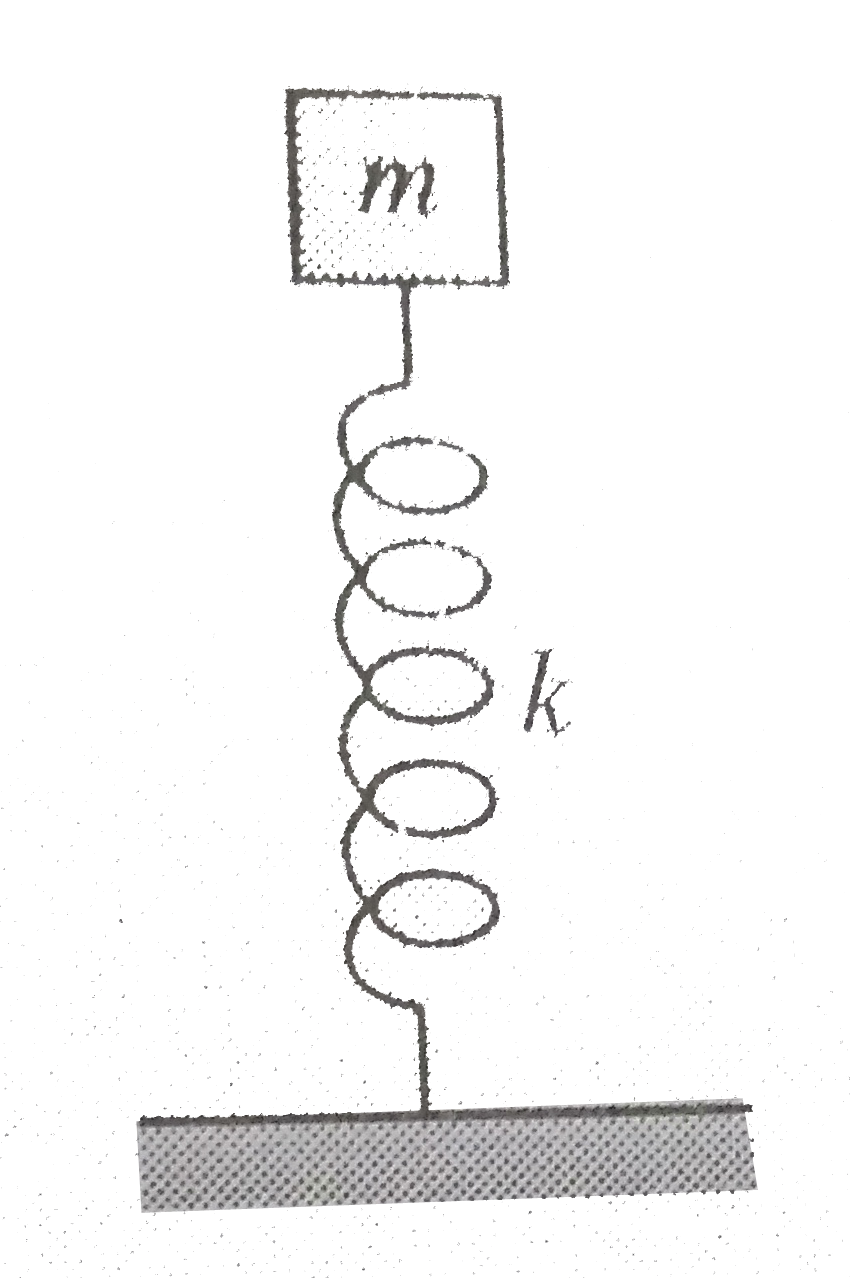
View SolutionA uniform board of length L is sliding along a smooth (frictionless) horizontal plane as in figure. The board then slides across the boundary with a rough horizontal surface. The coefficient of kinetic friction between the board and the second surface surface is `mu_k`
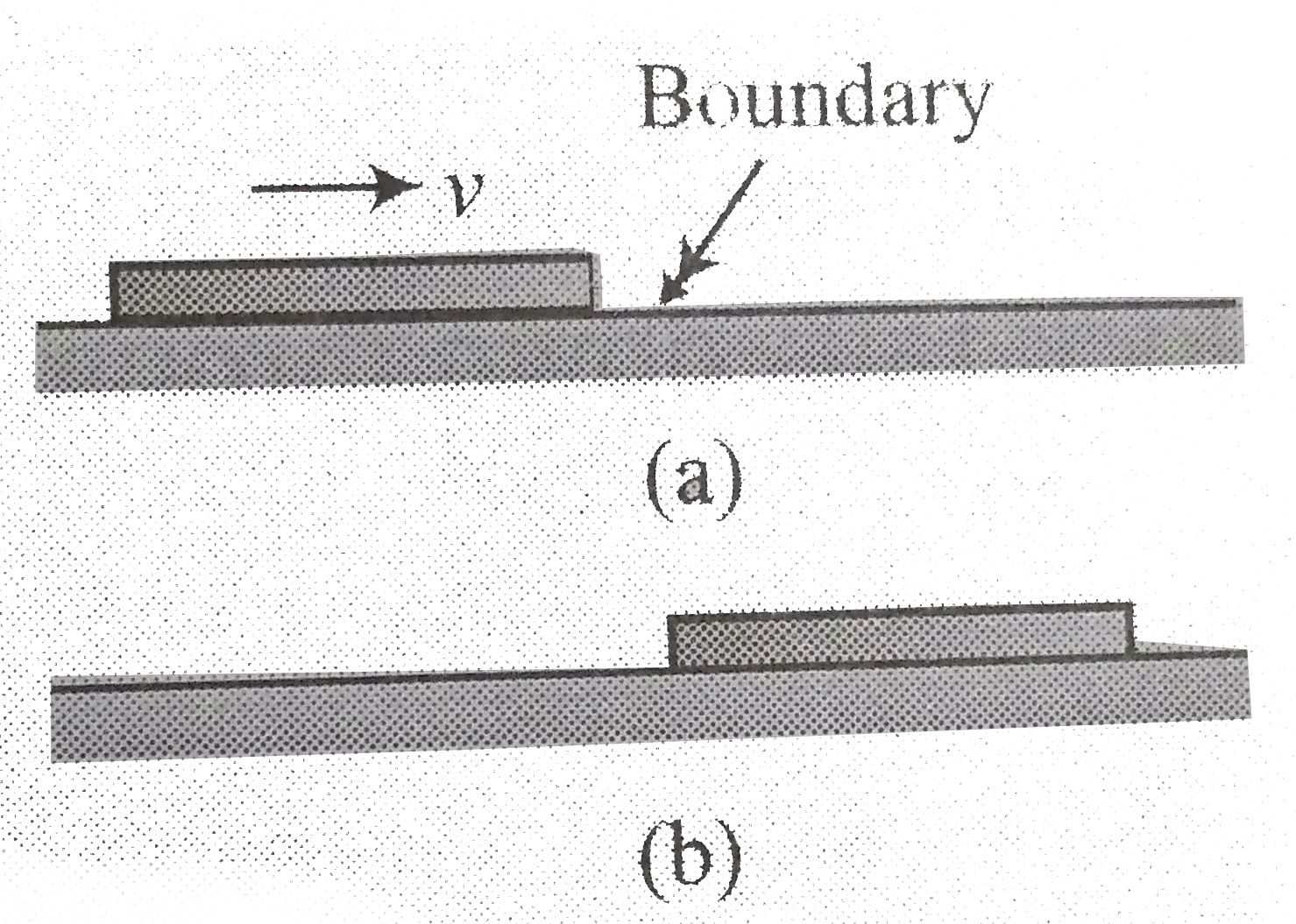
a. Find the acceleration of the board at the moment its front end has traveled a distance x beyond the boundary.
b. The board stops at the moment its back end reaches the boundary, as in figure. Find the initail speed `v` of the board.
View Solution
Exercise 8.2 questions and complete solutions for chapter WORK, POWER & ENERGY of CENGAGE PHYSICS (HINGLISH) of Class 11